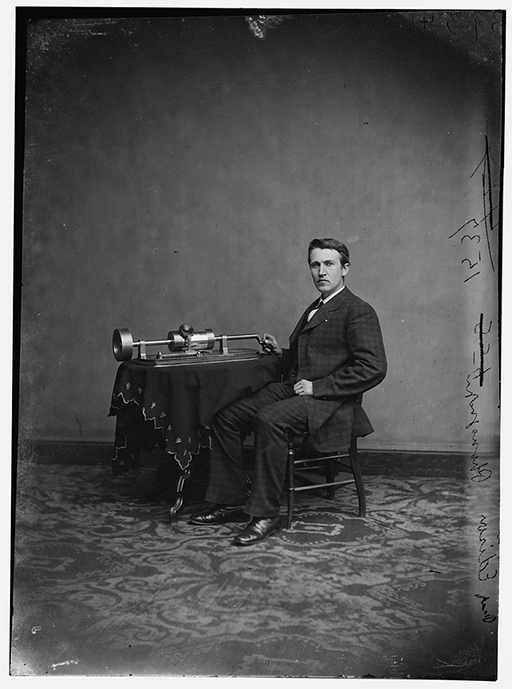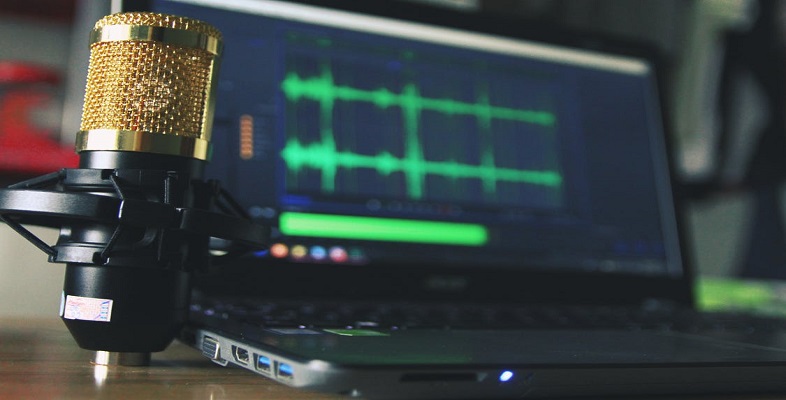2.2 Edison

In 1877 the young American inventor Thomas Alva Edison (1847–1931) finally completed development of an invention capable of capturing, recording and playing back sounds. Edison called it the phonograph, from the Greek meaning ‘sound-writer’. It is pictured with the inventor in Figure 1.
Activity 2
Listen to the following track. It is a recording of Edison speaking the nursery rhyme ‘Mary Had a Little Lamb’ made in 1927, 50 years after he made his original recording in 1877 (none of his original 1877 recordings have survived). What are the most striking features of the recording?
Discussion
The sound quality in the clip of Edison speaking that you have just listened to is very poor in comparison to what we have come to expect today. This is because the system used a recording method in which an individual shouted into a horn and the sound was transmitted onto a recording device (Figure 2). The fact a person had to shout indicates that the recording machine was very insensitive. This was due to the mechanical stiffness (inertia) of the mechanism that cut the groove into the recording medium, which in this case was tin-foil. This had a direct effect on the range of sound that could be recorded on mechanical recording machines.

